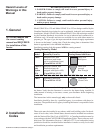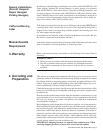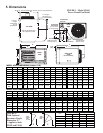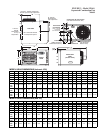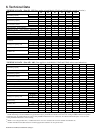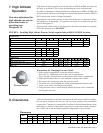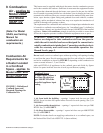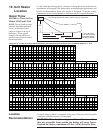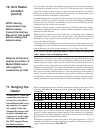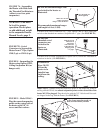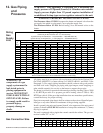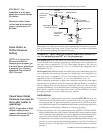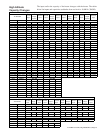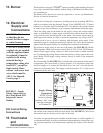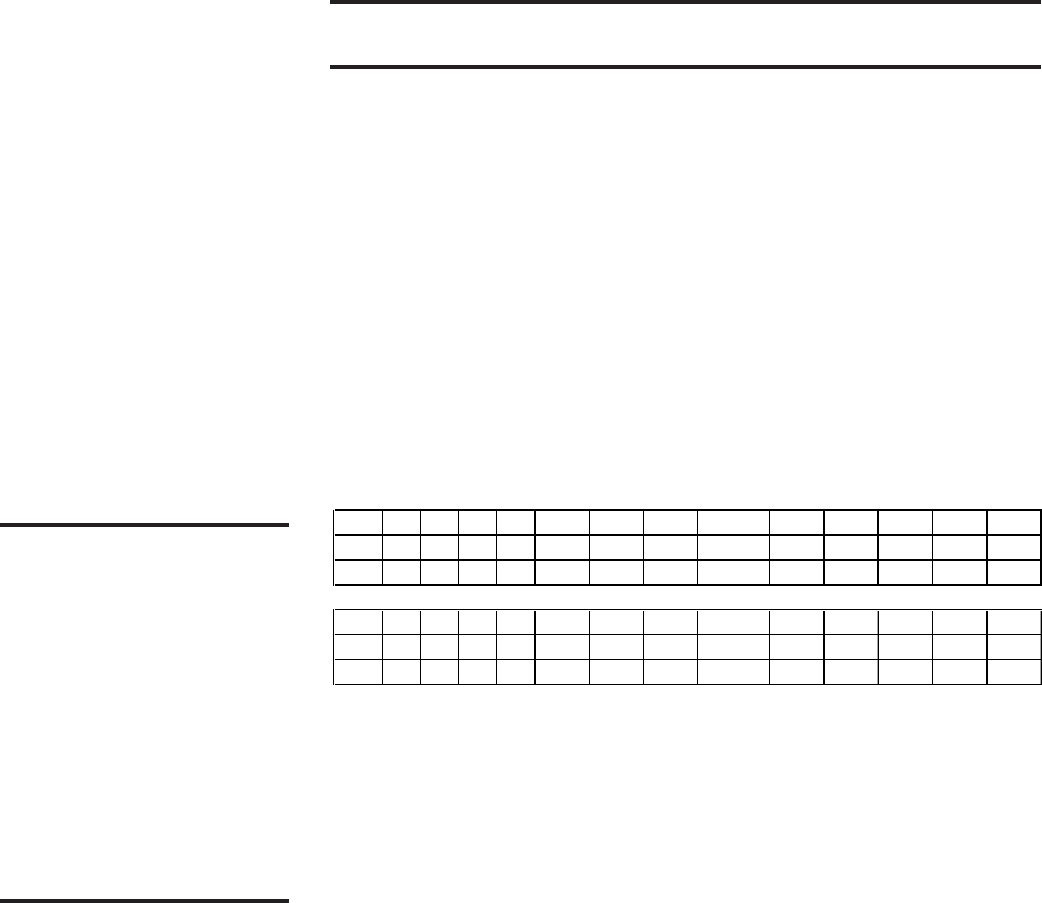
Form RZ-NA I-UDA, P/N 195673 Rev 5, Page 10
WARNINGS: Check the
supporting structure to
be used to verify that it
has sufficient load carry-
ing capacity to support
the weight of the unit.
Suspend the heater only
from the threaded nut
retainers or with a man-
ufacturer provided kit.
Do NOT suspend from
the heater cabinet.
11. Hanging the
Heater
When the heater is lifted for suspension, support the bottom of the heater with
plywood or other appropriately placed material. If the bottom is not supported,
damage could occur. Before hanging, verify that all screws used for holding ship-
ping brackets were re-installed in the cabinet.
The heater is equipped for either two-point or four-point suspension. A 3/8"-16
threaded nut retainer is located at each suspension point. See Dimensions in Para-
graph 5 and the illustration in FIGURE 7A.
Before suspending the heater, check the supporting structure to be used to verify
that it has sufficient load-carrying capacity to support the weight of the unit.
NOTE: Venting
requirements may
affect location.
Consult the Venting
Manual for this heater
before making final
determination.
Hazards of Chlorine -
applies to location of
Model UDAS heater
with regard to
combustion air inlet
For best results, the heater should be placed with certain rules in mind. In general,
a unit should be located from 8 to 12 feet (2.4-3.7M) above the floor. Units should
always be arranged to blow toward or along exposed wall surfaces, if possible.
Where two or more units are installed in the same room, a general scheme of air
circulation should be maintained for best results.
Suspended heaters are most effective when located as close to the working zone as
possible, and this fact should be kept in mind when determining the mounting
heights to be used. However, care should be exercised to avoid directing the dis-
charged air directly on the room occupants.
Partitions, columns, counters, or other obstructions should be taken into consider-
ation when locating the unit heater so that a minimum quantity of airflow will be
deflected by such obstacles.
When units are located in the center of the space to be heated, the air should be
discharged toward the exposed walls. In large areas, units should be located to
discharge air along exposed walls with extra units provided to discharge air in
toward the center of the area.
At those points where infiltration of cold air is excessive, such as at entrance doors
and shipping doors, it is desirable to locate the unit so that it will discharge directly
toward the source of cold air from a distance of 15 to 20 feet (4.6-6.1M).
CAUTION: Do not locate the heater where it may be exposed to
water spray, rain, or dripping water.
The presence of chlorine vapors in the combustion air of gas-fired heating equip-
ment presents a potential corrosion hazard. Chlorine found usually in the form of
freon or degreaser vapors, when exposed to flame will precipitate from the com-
pound, and go into solution with any condensation that is present in the heat ex-
changer or associated parts. The result is hydrochloric acid which readily attacks
all metals including 300 grade stainless steel. Care should be taken to separate
these vapors from the combustion process. This may be done by wise location of
the unit vent and combustion air terminals with regard to exhausters or prevailing
wind directions. Chlorine is heavier than air. Keep these facts in mind when deter-
mining installation location of the heater in relation to building exhaust systems.
10. Unit Heater
Location
(cont’d)
Model UDAP
Size
30 45 60 75 100 125 150 175, 200 225 250 300 350 400
lbs
54 59 67 72 96 101 172 187 203 215 269 294 306
kg
24 27 30 33 44 46 78 85 92 98 122 133 139
Model UDAS
Size
30 45 60 75 100 125 150 175, 200 225 250 300 350 400
lbs 55 60 68 73 97 102 173 188 204 216 270 295 307
kg 25 27 31 33 44 46 78 85 93 98 122 134 138



